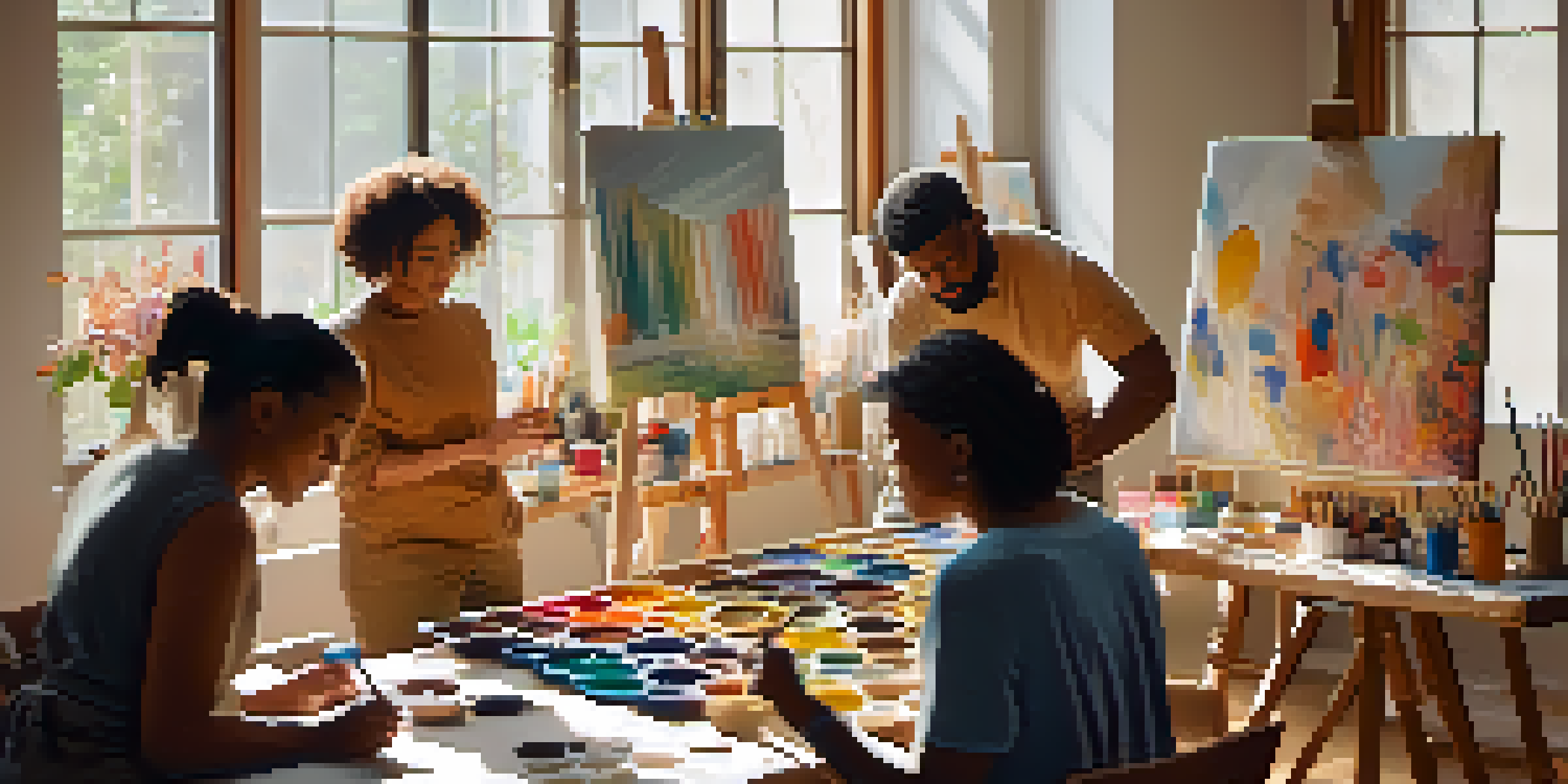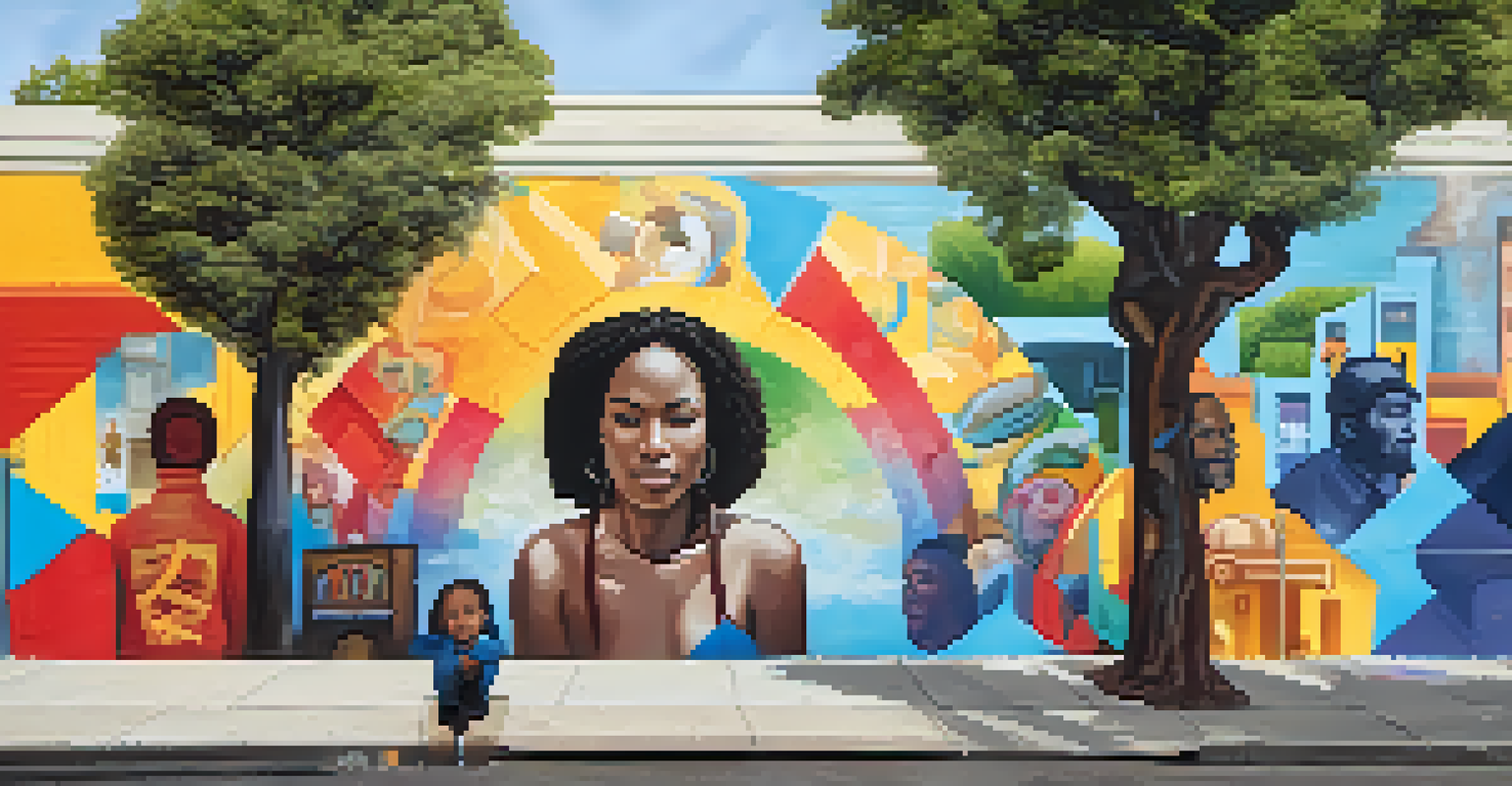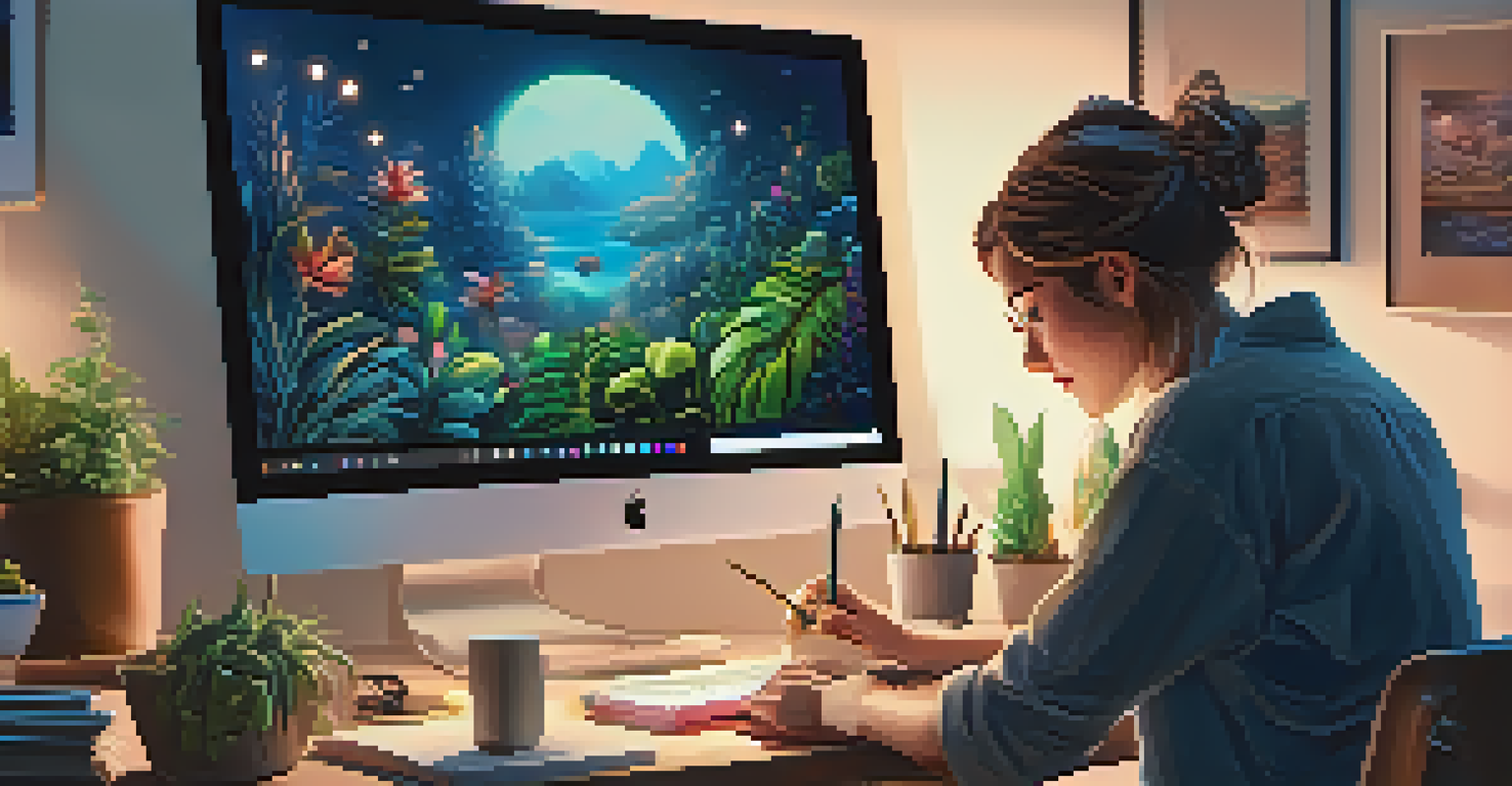Visual Arts and Mental Health: Cultural Perspectives and Values

The Therapeutic Benefits of Visual Arts
Visual arts have long been recognized for their therapeutic qualities. Engaging in creative activities, like painting or drawing, can provide a meaningful outlet for emotions and thoughts. This process often helps individuals articulate feelings they might struggle to express verbally.
Art enables us to find ourselves and lose ourselves at the same time.
For many, art serves as a refuge, allowing them to escape from daily stresses and mental health challenges. This escape can be particularly important in cultures where discussing mental health openly is often stigmatized. Through artistic expression, individuals can find solace and a sense of belonging.
Moreover, the act of creation itself can be incredibly rewarding, fostering a sense of accomplishment and self-worth. As people immerse themselves in visual arts, they often discover new aspects of their identity, which can be especially powerful in the context of healing and personal growth.
Cultural Interpretations of Art and Healing
Different cultures have unique perspectives on how art influences mental health. For instance, Indigenous cultures often incorporate traditional art forms as a means of storytelling and healing. These practices not only promote individual well-being but also strengthen community bonds.

In many Asian cultures, practices like calligraphy and ink painting are not just art forms but meditative practices. The focus on mindfulness in these activities helps individuals achieve mental clarity and emotional balance, showcasing how culture shapes the therapeutic use of art.
Art as a Healing Tool
Engaging in visual arts provides individuals with a meaningful outlet for emotions, fostering healing and personal growth.
Understanding these cultural differences is crucial for mental health professionals. By recognizing the value placed on various art forms, they can tailor therapeutic approaches that resonate more deeply with individuals from diverse backgrounds.
Art as a Means of Expression in Diverse Communities
In many communities, art acts as a powerful tool for self-expression, especially for marginalized groups. When traditional avenues of communication are limited, visual arts can provide a voice to those who feel unheard. This is particularly evident in urban environments where street art serves as both a form of protest and a celebration of culture.
Creativity takes courage.
For example, murals and graffiti can convey powerful messages about social issues, mental health struggles, and community pride. These expressions not only engage viewers but also foster conversations around mental health, encouraging others to share their experiences.
Furthermore, community art projects often bring together people from different backgrounds, creating a sense of unity and support. This collaborative spirit can be incredibly healing, as individuals realize they are not alone in their struggles and can find strength in shared experiences.
The Role of Art Therapy in Mental Health Care
Art therapy has emerged as a vital component of mental health care, bridging the gap between creativity and psychological healing. This therapeutic approach allows individuals to explore their feelings through artistic mediums, fostering emotional expression in a non-threatening environment. It’s particularly beneficial for those who may find it difficult to articulate their thoughts.
Certified art therapists utilize various art forms to help clients explore their emotions, reduce anxiety, and improve overall mental health. By providing guidance and support in this creative process, therapists can help individuals uncover underlying issues and work through them constructively.
Cultural Perspectives on Art
Different cultures view art as a vital aspect of mental health, using it for storytelling, healing, and community connection.
Research has shown that art therapy can lead to significant improvements in mental health, especially among those dealing with trauma or chronic stress. As more mental health professionals recognize its benefits, art therapy continues to gain traction in diverse treatment settings.
Exploring the Connection Between Art and Identity
Art is often intertwined with personal and cultural identity, influencing how individuals perceive themselves and their mental health. This connection can be especially profound in communities that celebrate rich artistic traditions. When individuals engage with these art forms, they may feel a stronger sense of belonging and purpose.
For many, creating art that reflects their cultural heritage fosters pride and resilience, acting as a counterbalance to mental health challenges. This exploration of identity through art can also encourage dialogue about mental health within families and communities, breaking down barriers and stigma.
Additionally, the representation of diverse identities in visual arts can inspire individuals to embrace their uniqueness. By seeing their experiences reflected in art, they may feel validated and empowered, contributing to their overall mental well-being.
The Impact of Digital Arts on Mental Health
With the rise of technology, digital arts have opened new avenues for creative expression and mental health exploration. Platforms like social media allow individuals to share their artwork widely, fostering a sense of community and connection. This digital space has become a vital outlet for those seeking to express their mental health journeys through art.
Moreover, the accessibility of digital tools means that more people can engage in artistic practices, regardless of their background or resources. This democratization of art encourages participation and creativity, which can be incredibly beneficial for mental health.
Digital Arts and Mental Wellness
The rise of digital arts offers new opportunities for creative expression and community, though balance with offline connections is essential.
However, it's essential to navigate the balance between online engagement and real-life connections. While digital arts provide a platform for expression, spending too much time online can sometimes exacerbate feelings of isolation. Finding that balance is key to reaping the mental health benefits of digital creativity.
Future Directions: Art, Mental Health, and Society
As we look to the future, the intersection of art and mental health is becoming increasingly recognized in society. Initiatives that promote mental health awareness through art are gaining momentum, highlighting the importance of creative expression in healing. This growing recognition can lead to more funding and support for arts programs that focus on mental health.
Furthermore, educational institutions are beginning to incorporate arts-based mental health programs into their curricula, recognizing the powerful role that creativity plays in emotional well-being. This shift can help cultivate future generations that value mental health and artistic expression equally.

Ultimately, fostering a societal appreciation for the relationship between visual arts and mental health can lead to a more compassionate and understanding world. By embracing this connection, we can create environments where individuals feel empowered to explore their mental health through art and community.